Whether you have a sprawling backyard or a compact balcony, the right landscaping can breathe new life into your outdoor space, turning it into a personal oasis of beauty and tranquility. This listicle presents 24 inspiring landscaping design ideas that cater to a variety of tastes, styles, and budgets. From lush gardens adorned with vibrant blooms to minimalist designs that embrace the elegance of simplicity, each idea is crafted to ignite your creativity and enhance the aesthetics of your property.
As you explore these diverse concepts, you can expect to discover practical tips for introducing elements like water features, unique pathways, and sustainable practices that will not only beautify your environment but also elevate your outdoor experience. Whether you’re a seasoned gardener or a novice looking to dip your toes into landscaping, this collection is sure to provide you with the motivation and insights you need to embark on your transformative journey. Dive in and let your imagination flourish!
Create a serene Zen garden with rocks and minimalist landscaping design elements
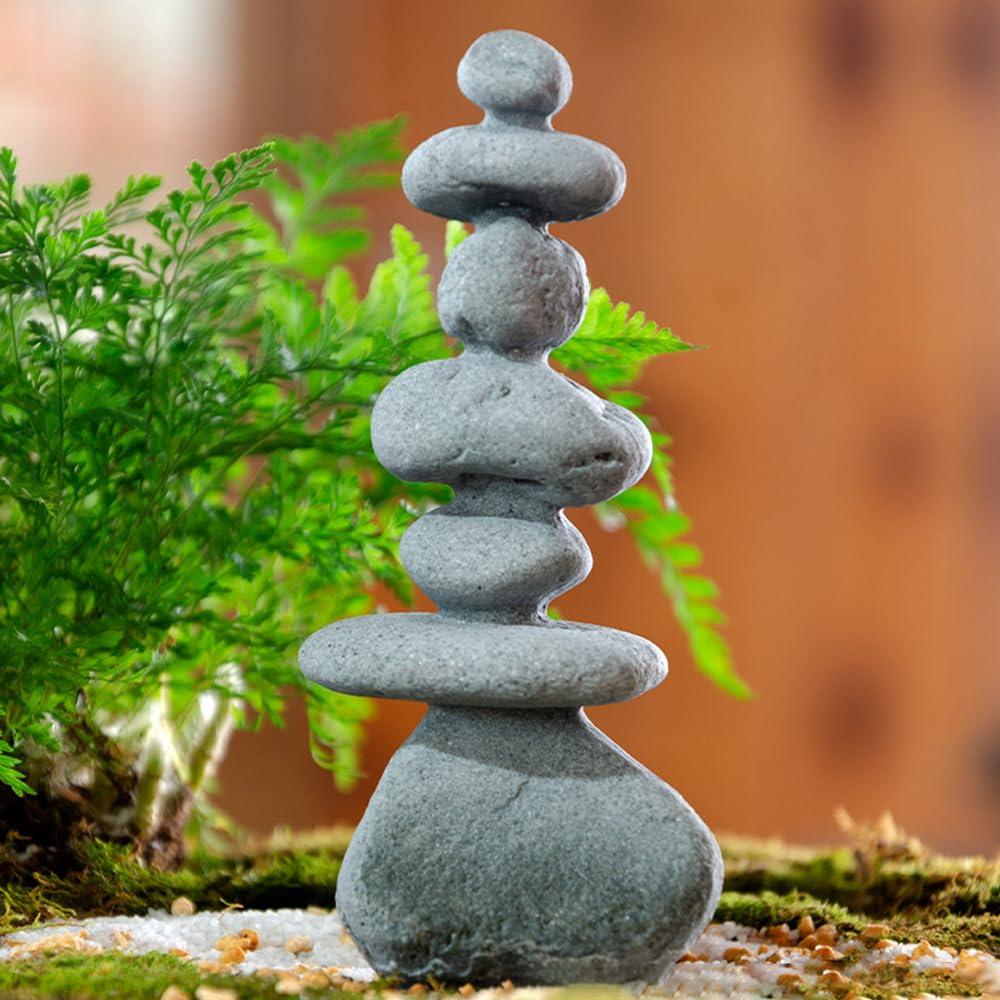
Transform your outdoor space into a peaceful retreat with a serene Zen garden that emphasizes simplicity and tranquility. Start by laying out large, flat stones as stepping stones or pathways, allowing visitors to walk thoughtfully through the landscape. Complement these elements with carefully chosen rocks, arranged in a harmonious display that speaks to the beauty of nature. Surround the stones with fine gravel or white sand, which can be raked into patterns that evoke rippling water. A minimalistic approach is key; avoid overcrowding the space with plants. Instead, consider adding just a few low-maintenance succulents or bamboo for a touch of greenery that complements the stones without overwhelming the senses.
To further enhance the zen-like atmosphere, incorporate elements that foster mindfulness and meditation. A small water feature, such as a stone fountain or a bamboo fountain, can add a soothing auditory backdrop while maintaining the minimalist aesthetic. Create a cozy seating area with a simple bench or a few cushions nestled amid the rocks, inviting relaxation and reflection. Japanese lanterns scattered throughout the garden can provide soft lighting in the evening, creating an intimate ambiance. You can explore more about creating Zen gardens and their benefits at japanesegardening.org.
Integrate native plants into your landscaping design for sustainable beauty and resilience
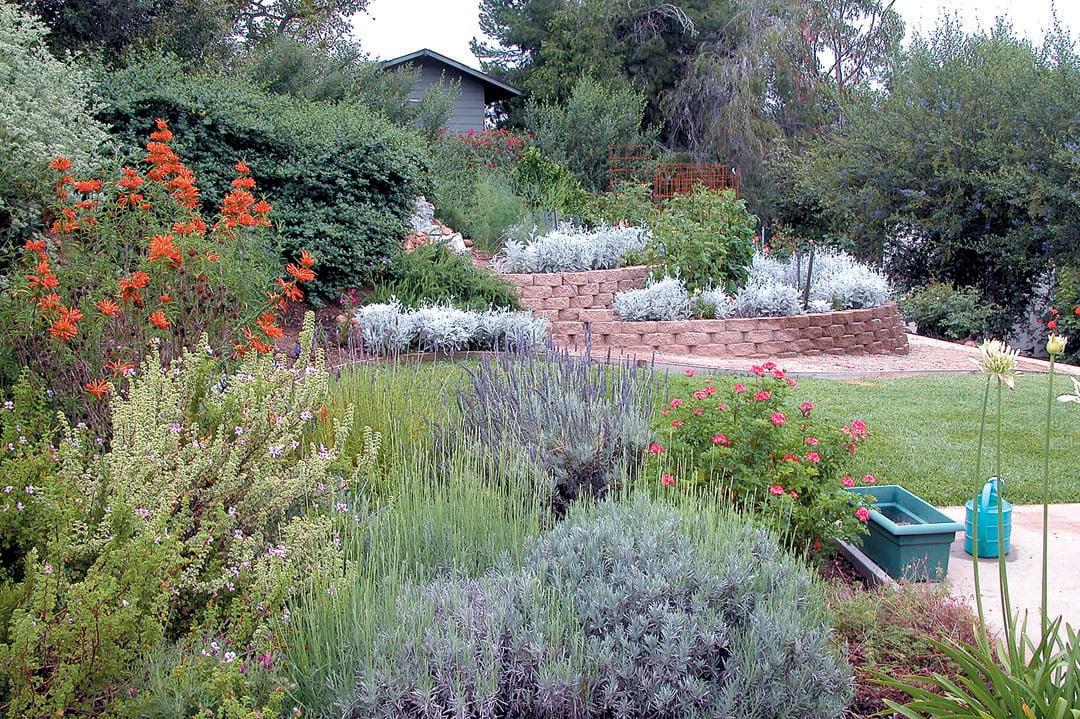
Incorporating native plants into your landscaping design not only enhances the visual appeal of your space but also supports local ecosystems. Native plants are adapted to your region’s climate and soil conditions, making them easier to maintain and more resilient against pests and diseases. Consider creating layered plantings with a variety of heights and textures to add depth. For example:
- Wildflowers: Use a mix of local wildflowers to bring vibrant colors and attract pollinators.
- Grasses: Opt for native ornamental grasses that require minimal maintenance and provide cover for local wildlife.
- Shrubs: Incorporate hardy native shrubs that offer year-round interest and support biodiversity.
In addition to plant selection, think about how to arrange your landscaping elements to promote sustainability. Use hardscapes that allow for drainage and minimize runoff, and consider incorporating rain gardens or permeable pathways. Utilizing native plants in these features can enhance their aesthetic quality while ensuring longevity. Take a look at the table below for some popular native plants to consider for your landscaping:
| Plant Type | Benefits | Bloom Season |
|---|---|---|
| Echinacea (Coneflower) | Attracts butterflies, drought-tolerant | Summer |
| Asclepias (Milkweed) | Supports monarch butterflies | Summer to Fall |
| Rudbeckia (Black-eyed Susan) | Long blooming period, easy-care | Summer to Fall |
For more information on the benefits of using native plants in your landscape, visit hpggardens.com.
Explore vertical gardens to maximize space and showcase vibrant landscaping design

In the hustle and bustle of urban life, where space is often at a premium, vertical gardens offer a striking solution that marries functionality with stunning aesthetics. Imagine transforming a blank wall or a small balcony into a lush, green oasis. By employing a variety of climbing plants, succulents, and herbs, you create not just a visual spectacle but also a space-saving sanctuary that improves air quality and provides a sense of tranquility. Ivy, ferns, and flowering vines can cascade down or climb up, creating a layered look that fully utilizes vertical space while adding depth to your landscape design.
To maximize the impact of your vertical garden, consider the use of modular planters, hanging pots, or grid systems that allow for easy reconfiguration and variety. Incorporating LED lighting can further enhance the vibrancy of your plants, especially during the evening hours, making your garden not just a daytime beauty but a nighttime delight as well. When choosing which plants to use, consider a mix of textures and colors to keep things visually exciting throughout the seasons. For guidance on suitable plant pairings and design inspiration, websites like gardeners.com offer a treasure trove of resources.
Use reclaimed materials for pathways, enhancing your landscaping designs eco-friendly appeal
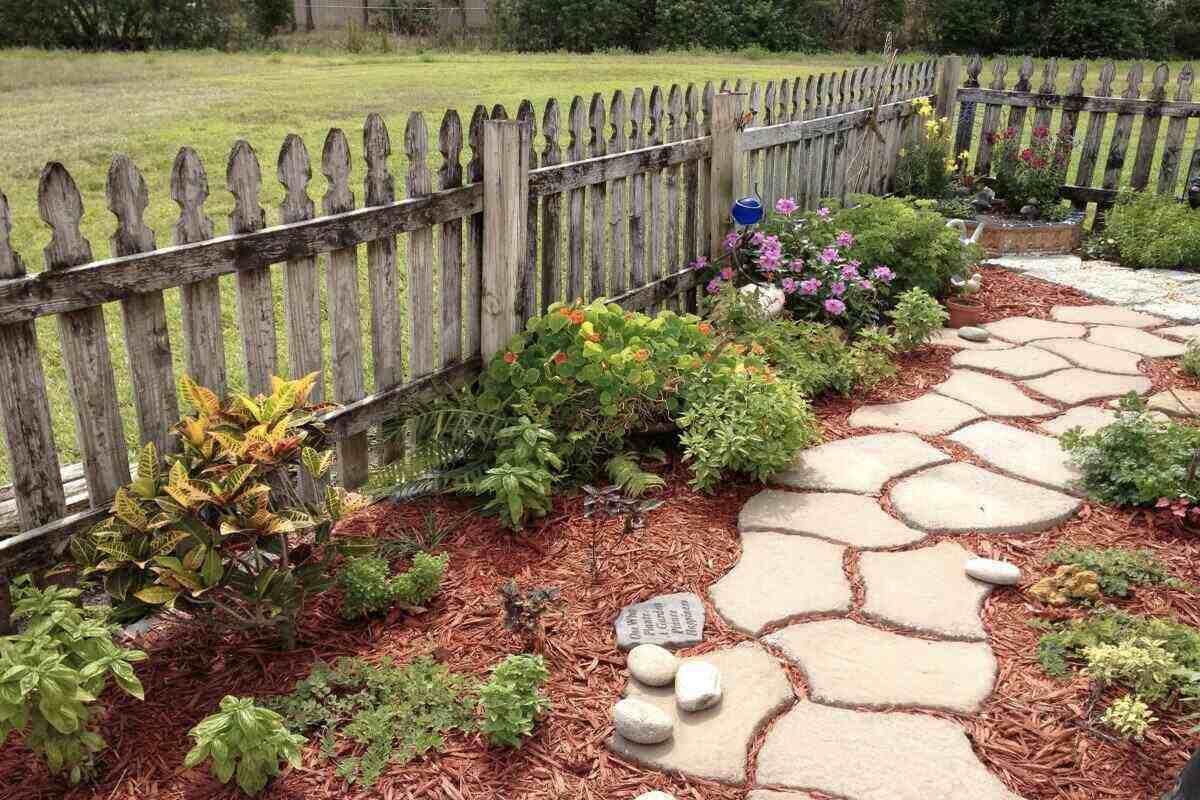
Transforming your outdoor space can take on a unique character when you incorporate reclaimed materials into your pathways. Using salvaged bricks, stones, or even repurposed wood planks not only offers an eco-friendly solution but also instills a story into your landscape design. Imagine a winding path made of old cobblestones that once paved the streets of a historic town, or a rustic boardwalk of reclaimed timber that adds charm and warmth to your garden. Such materials invite the past into your design, encouraging a connection to nature and history while promoting sustainability.
Creating pathways with reclaimed materials allows for endless creativity in your landscaping projects. You can combine different textures and colors by layering natural stones, recycled concrete, or even broken tiles for a mosaic-style walkway. These diverse materials can help define spaces within your garden, leading visitors from one beautifully designed area to another. Consider adding eco-friendly lighting along these paths to highlight the materials used and offer safety as guests stroll through your blooming oasis. For inspiration and ideas on sourcing reclaimed materials, check out Architectural Digest, where you can find numerous creative landscape designs utilizing sustainable resources.
Install water features to bring tranquility and movement to your landscaping design
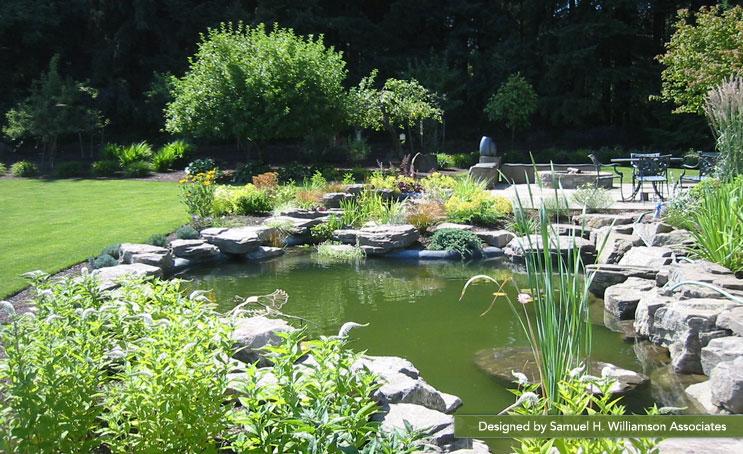
Water features add a mesmerizing element to your outdoor space, effortlessly blending tranquility with movement. Imagine the soothing sound of bubbling water cascading from a small fountain, or a serene pond reflecting the beauty of surrounding flora. Incorporating these elements into your landscaping doesn’t just enhance aesthetics; it creates a peaceful oasis that invites relaxation and reflection. Whether you opt for a simple birdbath, a sophisticated koi pond, or a dramatic waterfall, the options are boundless.
Consider opting for native plants around your water features, as they not only enhance the natural look but also support local wildlife. Effective integration of water elements into your garden can help to establish zones for different activities. For a cohesive design, use materials that complement the surrounding landscape, such as natural stones or decorative tiles. Think about lighting, too; illuminating your water feature at night can transform it into a dramatic centerpiece. Explore more about incorporating water features in your designs at thespruce.com.
Plan a seasonal flower garden that evolves throughout the year in your landscaping design
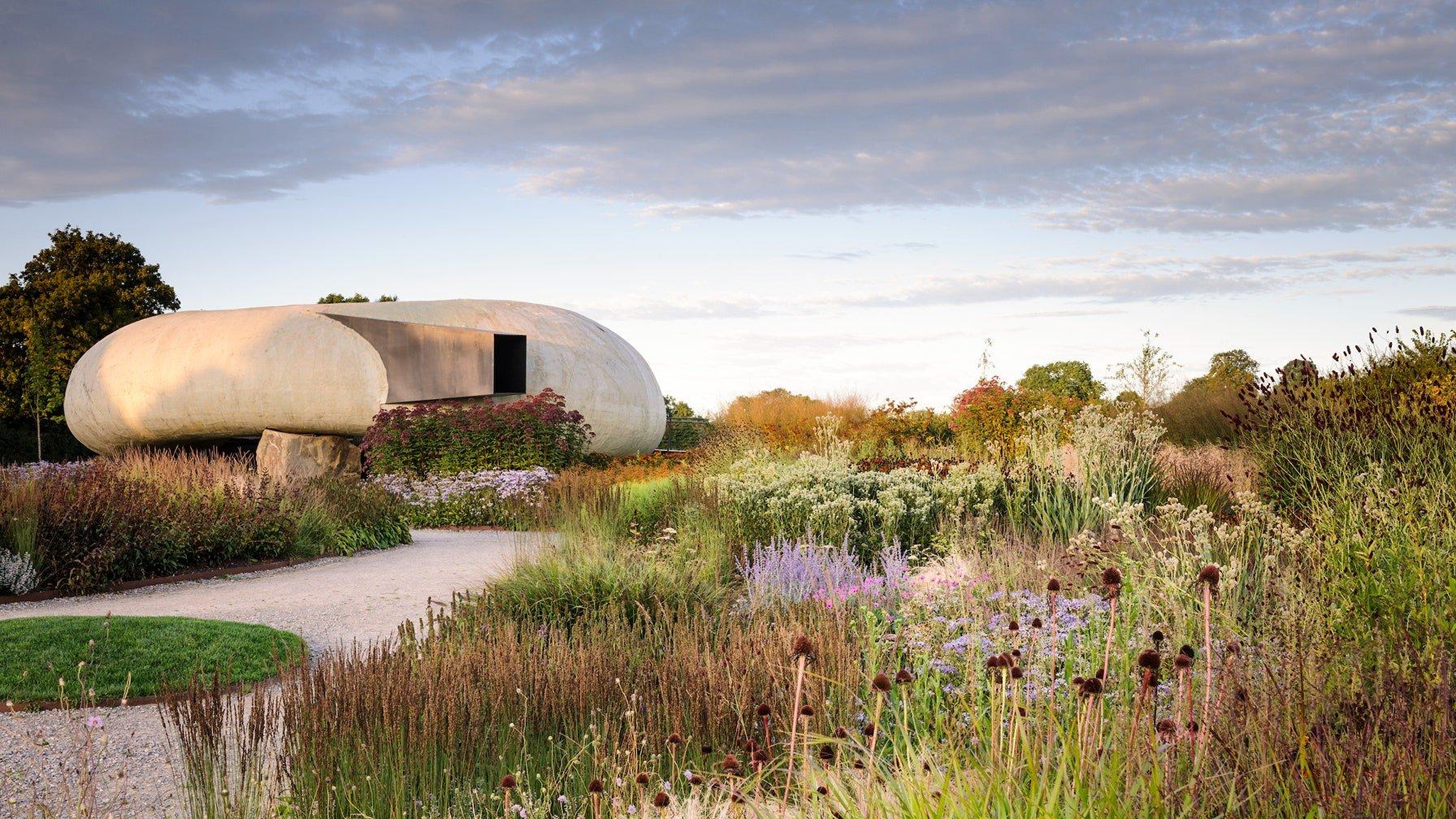
Creating a flower garden that transforms with the seasons is a delightful way to keep your landscaping dynamic and engaging. Start your design with spring staples such as tulips, daffodils, and hyacinths that herald the end of winter and bring bursts of color back into your space. As these blooms fade, transition into summer favorites like sunflowers, marigolds, and cosmos, which thrive in the warm sun and add joyful vibrancy to your yard. Incorporating layers of plants ensures that as one flower fades, another takes its place, creating a natural rhythm throughout the year.
To maintain interest in your garden through the fall and winter, consider including autumn bloomers such as asters and chrysanthemums that will keep your yard colorful when the leaves fall. Additionally, plants like ornamental grasses can add height and texture, while evergreens provide a lush backdrop even under snow. Using a mix of perennials and annuals will also extend your garden’s blooming period, ensuring that each season boasts a unique palette. For further guidance on seasonal planting, consult resources like Gardeners.com which offers comprehensive tips on garden planning.
Incorporate outdoor lighting to highlight unique landscaping design features after dusk
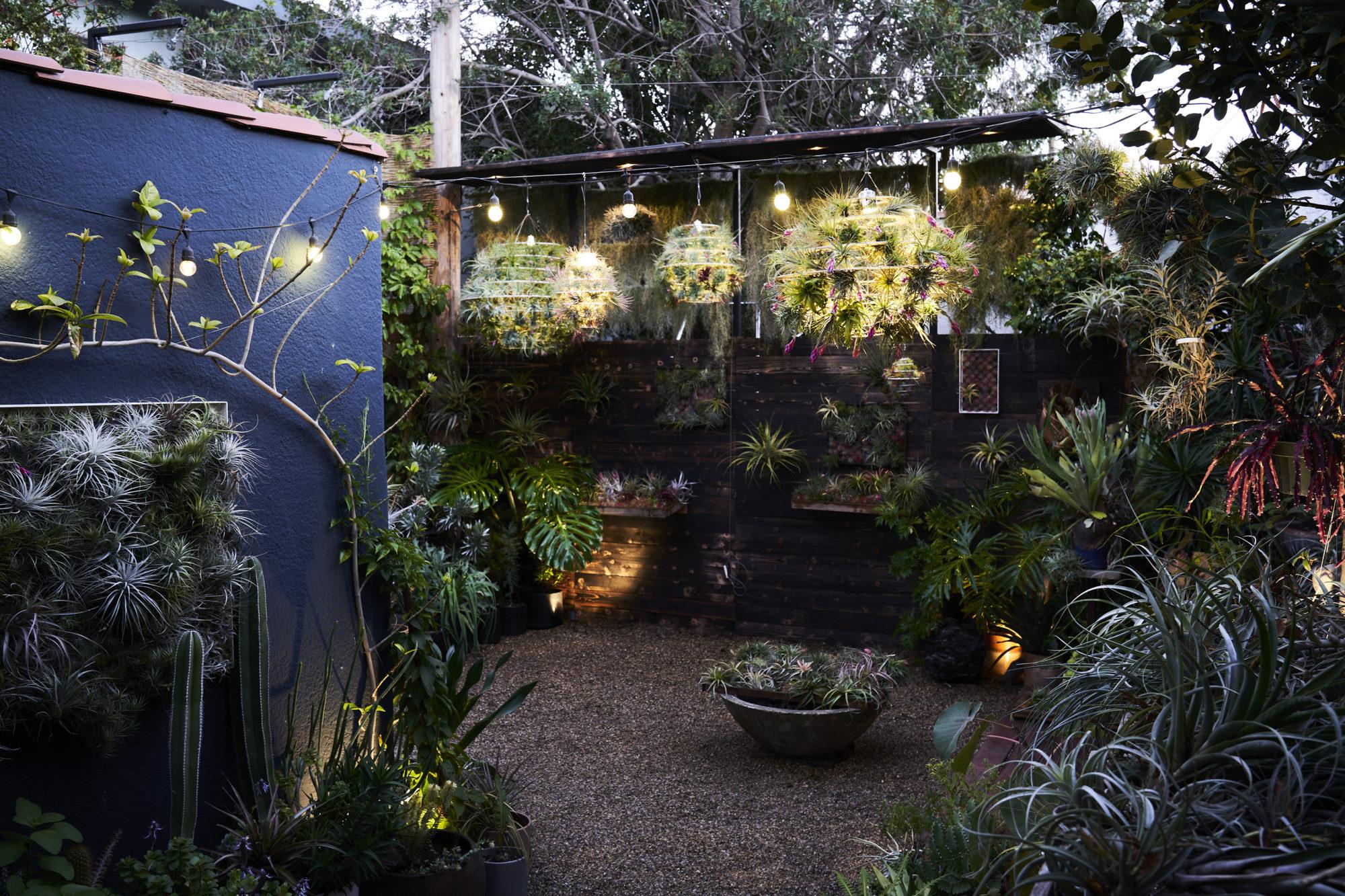
Transforming your outdoor space after the sun sets requires strategic lighting to showcase the beauty of your landscaping. Consider using spotlights and path lights to draw attention to specific features such as ornamental trees, sculptures, or water features. By placing lights at angles that highlight the textures and colors of these elements, you can create a captivating atmosphere that encourages evening gatherings and peaceful strolls through your garden. For an additional touch, use string lights or LED strips to accentuate hardscaping features, like walls or fences, turning the ordinary into extraordinary.
Incorporate a mix of lighting types to create dimension and interest in your landscape design. For example, uplighting can be employed to cast dramatic shadows and illuminate the upper branches of trees, while downlighting can simulate moonlight by shining from above, creating a soft and inviting glow along pathways. Combining these techniques not only enhances safety but also adds a layer of magic to your outdoor sanctuary. As you explore your options, check out resources like Houzz for inspiration and expert advice on selecting the perfect fixtures for your unique landscape.
Design a cozy fire pit area surrounded by thoughtful landscaping design for gatherings
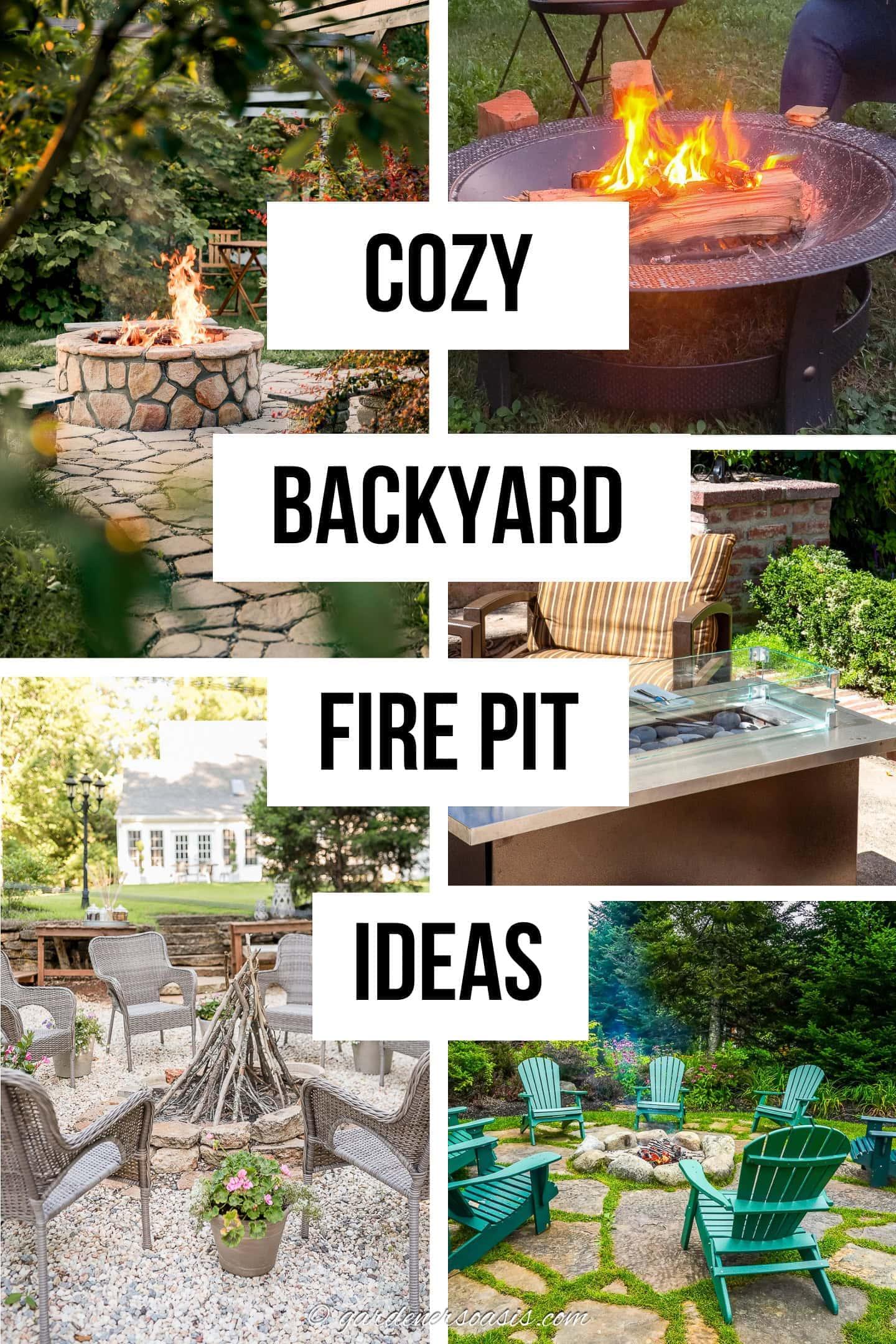
Transform your outdoor space into a welcoming retreat by designing a fire pit area that invites friends and family to gather. Start by selecting a central fire pit that reflects your style—be it rustic stone, sleek metal, or a modern circular design. Surround the fire pit with comfortable seating options such as weather-resistant chairs, wooden benches, or cozy, oversized floor cushions to enhance comfort during those chilly nights. Create a mesmerizing ambiance with warm lighting—think string lights overhead or lanterns nestled in nearby shrubs that illuminate the area without overpowering the natural beauty.
To further enhance the space, consider incorporating thoughtful landscaping elements such as lush greenery, colorful flower beds, and strategically placed decorative stones. These features can frame your fire pit area, adding a touch of serenity and character. Grassy patches or gravel pathways can lead guests seamlessly to the fire pit, while tall grasses and evergreens create a natural privacy screen. For added flair, use a small table for snacks and drinks, and keep it adorned with seasonal decor to make the space uniquely yours. Explore more inspiration at houzz.com to ignite your creativity.
Implement layered planting techniques to create depth in your landscaping design
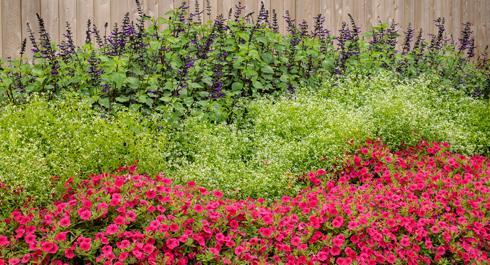
Layered planting techniques bring a delightful complexity to your landscape, providing both aesthetic benefits and practical advantages. By combining plants of varying heights, textures, and colors, you can create a lush and dynamic environment that draws the eye and invites exploration. Start by assessing your space: identify which areas are sunny, shaded, or wet, as these factors will dictate plant selection. Use taller plants like perennials or small trees at the back of borders, with medium-height flowers such as asters or daylilies in the middle, and low-growing ground covers like sedum or creeping thyme at the front. This arrangement not only maximizes visibility but also provides habitats for diverse wildlife.
When planning your layered design, consider the seasonal changes that can further enhance visual interest. Opt for a mix of evergreen and deciduous plants; evergreen shrubs can provide structure in winter months while deciduous varieties bring vibrant colors in the fall. Incorporate ornamental grasses that add movement and texture throughout the year. To help illustrate your design, you might find it useful to refer to planting guides and resources, such as those available on gardendesign.com, for expert tips and inspiring visual aids. Make sure to vary your plant heights within the layers for added depth, creating a more inviting and engaging garden space.
Use ornamental grasses to add texture and movement to your landscaping design
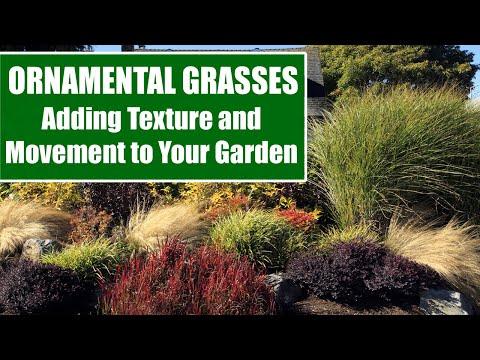
Integrating ornamental grasses into your landscaping design can elevate your outdoor space by providing a stunning visual contrast and dynamic movement. These grasses, with their diverse textures and heights, add depth to beds and borders. Varieties like Feather Reed Grass and Blue Fescue can serve as focal points, swaying gently in the breeze and creating a sense of tranquility. Layering taller grasses in the back with shorter ones in the front offers visual balance, while their graceful forms provide interest throughout the seasons. For a more vibrant look, group several species together to create lively waves of color and texture that catch the eye and invite exploration.
Consider using swaths of ornamental grasses to define spaces within your landscaping. This technique can separate garden areas, pathways, or even create a natural screen for privacy. Choosing grasses that change color or produce flowers at different times of the year enhances this effect, ensuring your landscape remains engaging year-round. When selecting grasses, look for native varieties that thrive in your local climate, as they are usually more adaptable and require less maintenance. For further inspiration on the various types of ornamental grasses, check out The Practical Plan, which offers excellent resources on landscaping with these flexible plants.
Create a pollinator garden, supporting wildlife with a purposeful landscaping design

Transforming your outdoor space into a pollinator garden not only enhances its beauty but also creates a vibrant ecosystem that supports local wildlife. By selecting native plants that attract bees, butterflies, and other beneficial creatures, you can design a landscape that is both functional and aesthetically pleasing. Consider incorporating a variety of flowering plants with staggered bloom times to ensure a continuous source of nectar throughout the seasons. Some excellent choices include milkweed, coneflowers, and lavender, providing not only visual interest but also critical habitat for pollinators. The key is to create a layered design with differing heights, adding depth to your garden while offering shelter and nesting sites for insects.
To enhance the appeal of your pollinator garden, integrate assorted features such as water sources and natural habitats. Small ponds or bird baths can provide essential drinking water, while carefully arranged rocks and wood piles can serve as excellent overwintering spots for beneficial wildlife. Beneath the surface of your design lies a vibrant community thriving under your care. Take advantage of handy resources like Pollinator Partnership to find detailed information on designing and maintaining a pollinator-friendly landscape. Whether using a subtle color palette or incorporating whimsical garden art, each choice you make contributes to a thriving sanctuary for pollinators.
Embrace the cottage style with informal plantings in your landscaping design

Transform your outdoor space into a cozy retreat by incorporating informal plantings that reflect the natural, charming essence of cottage style. Consider a mix of perennials, wildflowers, and herbs that not only provide vibrant color but also create a relaxed atmosphere. Think about layering your plants: tall sunflowers or hollyhocks can act as a backdrop, while lower-growing lavender or chamomile add lushness at the front. Together, they form a seamless transition from garden to home, inviting you to explore every corner. Grouping plants in clusters rather than straight lines offers that wonderfully disheveled look that characterizes cottage gardens.
Incorporating elements like rustic fences, weathered pots, and natural stone pathways can enhance the informal vibe of your landscape design. Using salvaged materials not only adds character but also complements the surrounding flora. You might consider using edging stones or even wooden logs as borders for garden beds, allowing for a fun mix of textures and colors. For added charm, intertwine climbing vines like clematis or honeysuckle around trellises or fences; these will grow and evolve, creating beautiful aesthetics throughout the seasons. For more ideas on cottage-style landscaping, check out Garden Design to inspire your creativity.
Design a functional vegetable garden that harmonizes with the overall landscaping design
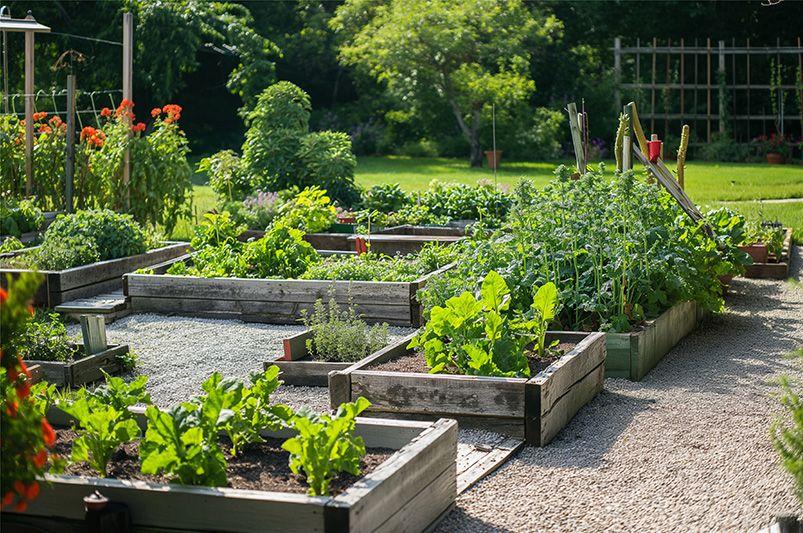
Incorporating a vegetable garden into your landscape design can provide both aesthetic appeal and fresh produce. To create a harmonious look, consider raised beds or vertical gardening options. These methods not only allow for easier maintenance and harvesting but can be designed to blend seamlessly into your garden’s overall style. Use natural materials like wood or stone that resonate with your outdoor area, and incorporate elements like decorative trellises or fences that can support climbing plants. This not only adds a functional aspect but also integrates beauty into your suburban oasis.
Another way to harmonize your vegetable garden is through strategic plant selection that complements existing flora. Choose a color palette that aligns with your overall garden scheme. For instance, integrating herbs and edible flowers that have vibrant blooms can serve dual purposes of function and aesthetics. Adding a pathway of stepping stones or gravel leading to your vegetable zone will create a cohesive flow, enhancing accessibility while providing a distinct yet integrated space. Use this link for more tips on design techniques: Garden Design.
Introduce curved pathways for a flowing aesthetic in your landscaping design
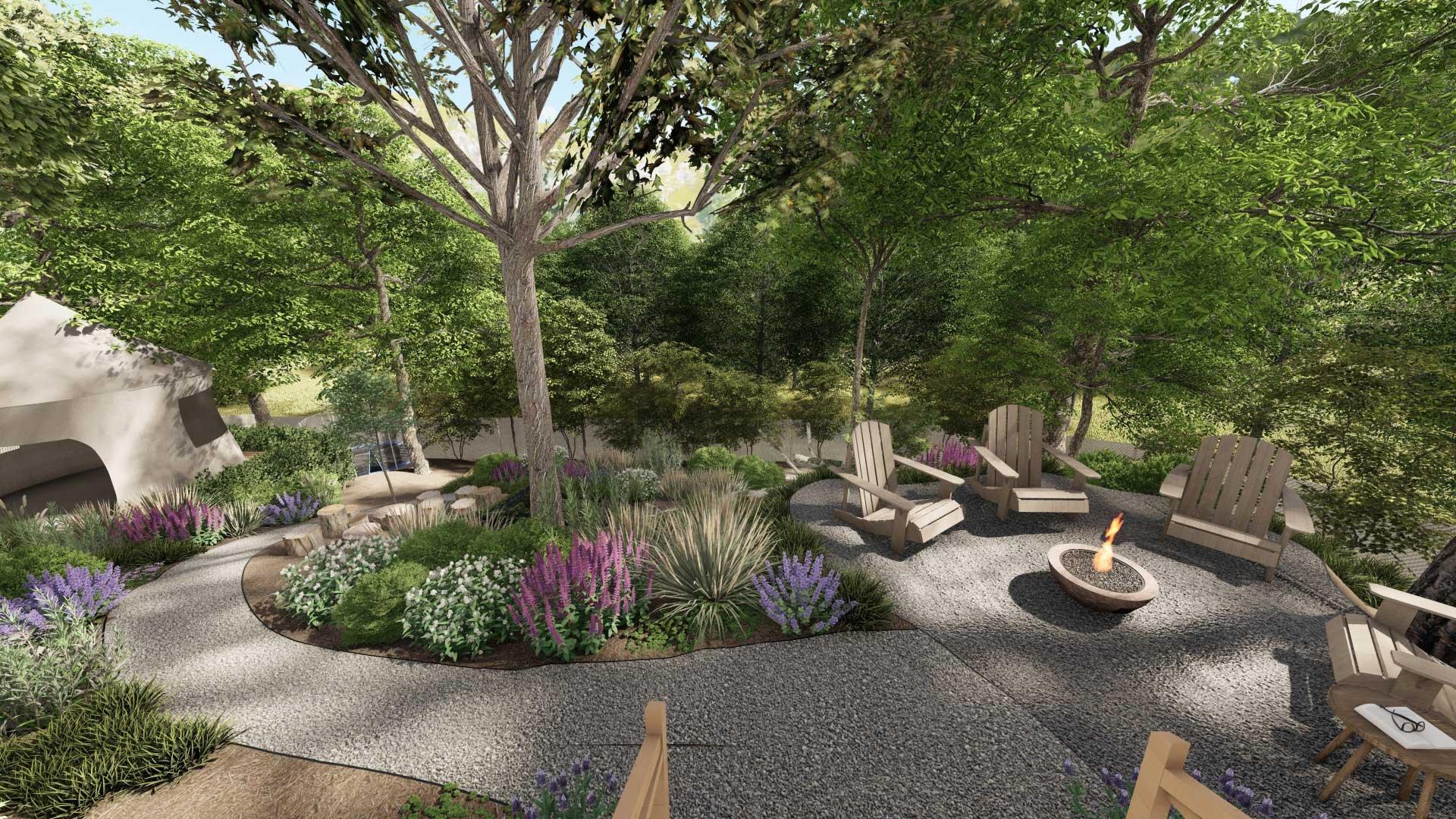
Curved pathways can dramatically transform the visual flow of your garden, creating a sense of movement and intrigue. Unlike traditional straight paths, these gentle curves invite exploration, leading the eye and feet on an adventure through your landscaped space. To create a harmonious design, consider using materials that complement the surrounding flora, such as rustic gravel or warm-hued pavers. This not only enhances the aesthetic appeal but also supports a naturalistic feel. A rich tapestry of plant life can be strategically placed along the path, softening edges and providing a lush canopy overhead.
Furthermore, integrating curves into your design allows for unique focal points and seating areas to emerge naturally. By using boulders, flower beds, and benches to accentuate the undulating line of the pathway, you can craft inviting spots that encourage relaxation and appreciation of the landscape. To enhance the whimsical nature of a curved pathway, consider adding low lighting or decorative borders that subtly guide visitors along the route. For more inspiration on how to implement these ideas, check out gardenista.com to see stunning examples of curved pathways in landscaping.
Use colorful containers to accentuate your landscaping design and add versatility
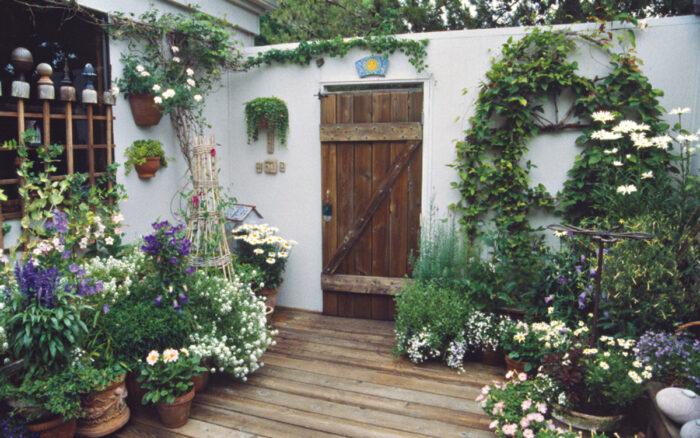
Using vibrant containers in your landscaping design not only injects a splash of color but also enhances the overall aesthetic appeal of your outdoor spaces. These decorative pots can be arranged in clusters or used as focal points to draw the eye and create visual interest. Consider the following benefits of integrating colorful containers:
- Flexibility in Planting: Change your plantings seasonally to keep your landscape dynamic and engaging.
- Easy Mobility: Rearrange or relocate potted plants to refresh your garden layout without significant effort.
- Size Variation: Use small, medium, and large containers to add depth and dimension to your landscape.
- Color Coordination: Choose pots that complement your home’s exterior or the natural hues of your garden.
Mixing textures and colors across your containers can transform a mundane space into a vibrant garden paradise. For a well-rounded design, consider incorporating:
| Container Size | Color Suggestions | Ideal Plant Types |
|---|---|---|
| Small | Bright Yellow, Coral | Succulents, Herbs |
| Medium | Turquoise, Fuchsia | Perennials, Annuals |
| Large | Deep Purple, Olive Green | Small Trees, Ornamental Grasses |
By thoughtfully selecting and arranging colorful containers, you can cultivate a unique and versatile outdoor space that continually evolves. For further inspiration and ideas, visit House Beautiful.
Create cozy seating areas nestled among lush greenery in your landscaping design
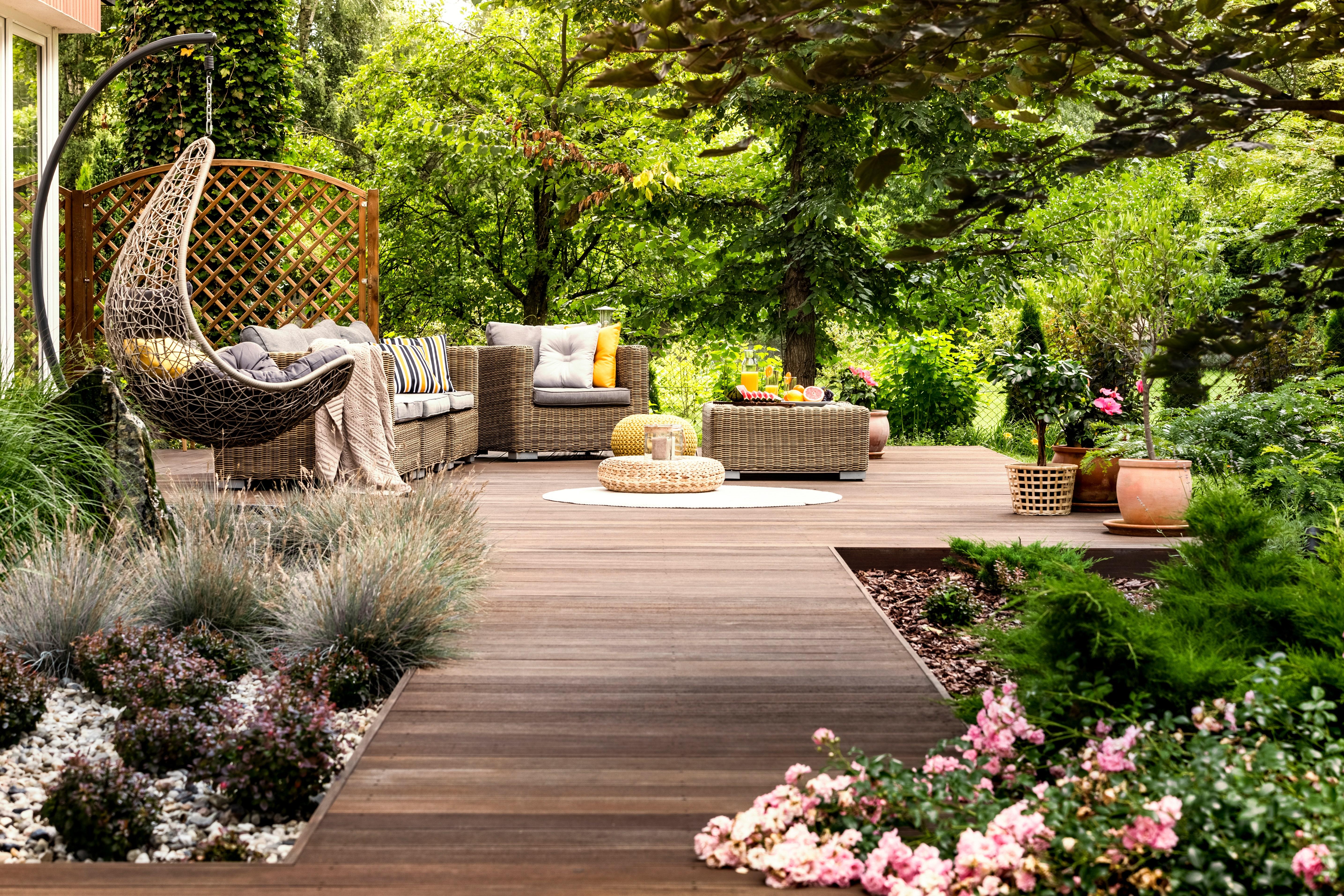
Transform your garden into a serene retreat by crafting cozy seating nooks surrounded by lush greenery. Consider using natural materials for your seating options, such as wooden benches or wicker chairs, which blend seamlessly into the tranquil atmosphere. Incorporate throw pillows in earthy tones to enhance comfort while adding a pop of color. Surround these areas with tall, flowing grasses or fragrant flowering plants that not only provide privacy but also create a delightful sensory experience. To elevate the charm, add delicate pathways made of stone or gravel that meander through the greenery, guiding you to these hidden spots.
For an extra touch of intimacy, think about including overhead structures like pergolas or trellises draped with climbing vines. These additions can provide shade while enhancing the visual interest of your space. Equip your cozy corners with soft lighting such as solar lanterns or twinkling fairy lights, which create a magical ambiance for evening relaxation. A small water feature, like a fountain or birdbath, can add soothing sounds and attract local wildlife. To discover more ideas on how to design these inviting spaces in your garden, check out resources on Gardenista.
Utilize evergreen plants for year-round interest in your landscaping design
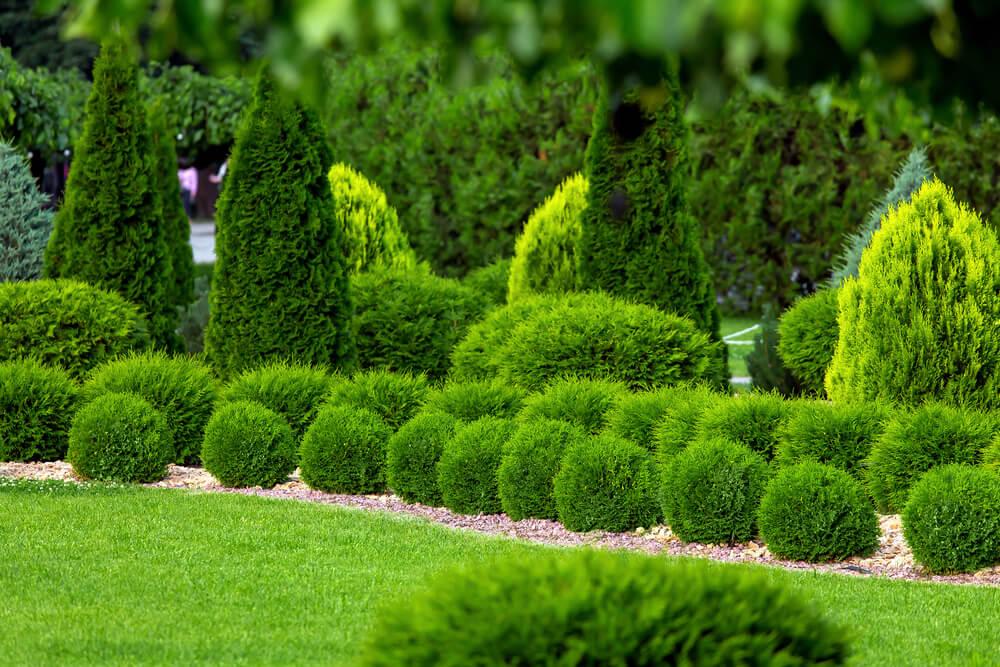
To create a captivating landscape that remains attractive throughout the seasons, incorporating evergreen plants is essential. These resilient flora maintain their lush foliage, providing structure and visual interest when other plants are dormant or bare. By strategically placing them within your design, you can achieve a well-rounded aesthetic that echoes throughout the year. Consider using a variety of evergreen shrubs and trees to complement your seasonal blooms, layering textures and heights to foster depth in your garden.
When selecting plants for your landscape, think about the specific colors and shapes of different evergreens to enhance your design further. For instance, narrow columnar varieties can serve as elegant focal points, while vibrant junipers provide ground cover that suppresses weeds and adds a splash of color. You can mix these elements in a combination that suits your taste and space. Here’s a simple table outlining popular evergreen choices alongside their key characteristics:
| Plant | Height | Color |
|---|---|---|
| Boxwood | 2-10 ft | Green |
| Pine | 10-100 ft | Green |
| Holly | 5-15 ft | Dark Green/Reddish Berries |
| Cypress | 10-40 ft | Green |
Explore more options for evergreens at Gardenia.net for a year-round vibrant landscape that energizes your outdoor space.
Add decorative boulders as focal points to enhance your landscaping design
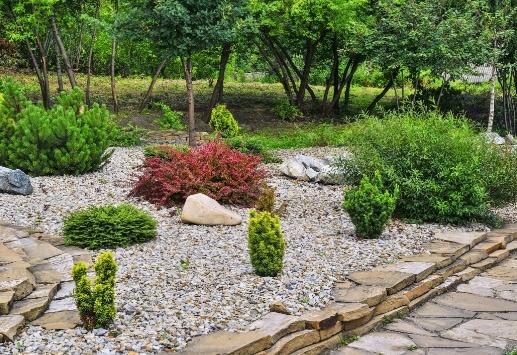
Transform your outdoor space by integrating decorative boulders that serve as stunning focal points. These natural elements can add texture, color variations, and unique forms, enhancing the overall aesthetic of your landscape. Arrange them strategically in your garden to create a sense of unity and flow. Consider using larger boulders to draw attention to specific areas, such as your flower beds, water features, or seating arrangements. The contrast between the rugged surfaces of the rocks and the softness of the surrounding plants will provide visual interest and create a dynamic landscape.
When selecting decorative boulders, think about their size, shape, and color in relation to your existing features. You can experiment with various combinations, elevating the landscape design through layering and textural contrasts. Incorporate native vegetation around the boulders to further enhance their appeal and create a harmonious atmosphere. To maximize the impact of your boulders, consider the time of day, as shadows and sunlight will highlight different aspects of their beauty. For inspiration, explore resources like HGTV to discover how others have successfully integrated boulders into their landscaping designs.
Plan shaded retreats with canopies and trees in your landscaping design for comfort
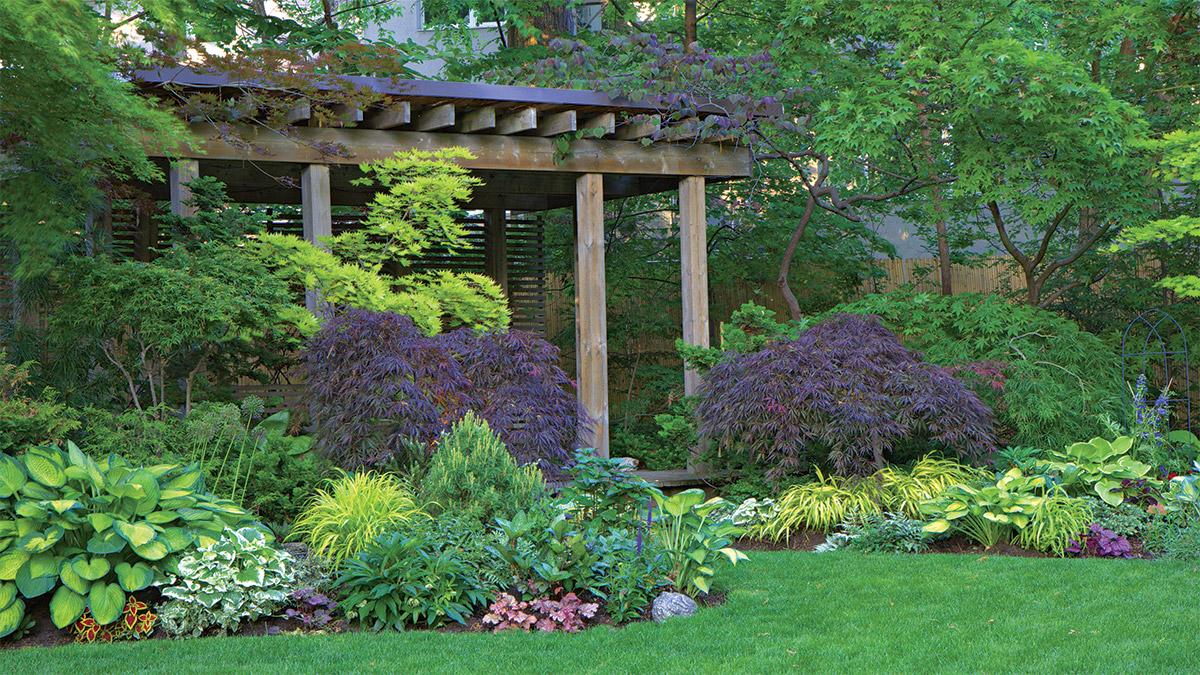
Creating shaded retreats in your outdoor space can be both a beautiful and practical enhancement to your home landscape. Use canopies adorned with flowing fabrics or sturdy canvas to create a soft, inviting lounge area. Complement this with a mixture of deciduous and evergreen trees that provide natural shade, allowing you to enjoy your garden year-round. The interplay between the soft draping of the canopies and the vertical structure of the trees can establish picturesque seating nooks for relaxation or entertaining.
Consider incorporating various textured plants around the shaded areas, enhancing the visual dynamics of the space. Hanging planters, colorful cushions, and decorative garden furniture can transform these retreats into lush hideaways. To further customize your design, think about adding low-maintenance ground cover plants beneath the trees, providing a soothing, green carpet to walk upon. For more inspiration and tips on landscaping design, visit houzz.com.
Consider a drought-resistant landscaping design with succulents and xeriscaping techniques
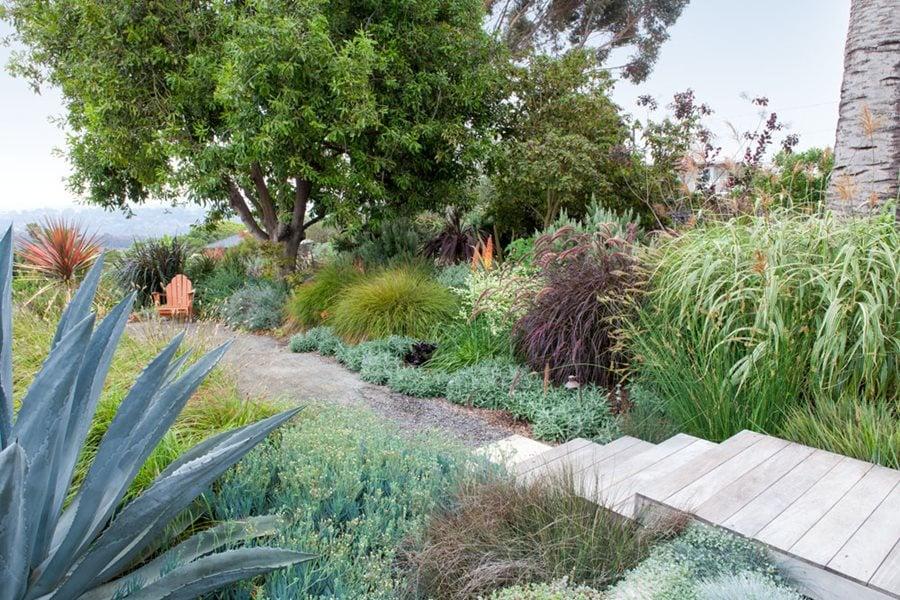
Revamping your garden with drought-resistant landscaping can turn a water-intensive space into a stunning oasis that flourishes even in dry conditions. By integrating succulents and other hardy plants, you can create a vibrant landscape that requires minimal maintenance while remaining visually striking. Consider using a variety of textures and colors when selecting your succulents. Creeping thyme, sedum, and agave can be excellent choices that bring depth and interest to your garden. Pair these plants with natural stones or gravel to create pathways that blend seamlessly with your design, encouraging both functionality and beauty.
Adopting xeriscaping techniques not only conserves water but also supports beneficial local ecosystems. When planning your layout, focus on grouping plants with similar water needs together, which can help optimize irrigation efforts. Implementing mulch can further assist in moisture retention and temperature regulation for your soil. Consider creating a table of easy-care options for a quick reference:
| Plant Type | Water Needs | Benefits |
|---|---|---|
| Agave | Low | Striking architectural form |
| Sedum | Very Low | Variety of colors and low-maintenance |
| Russian Sage | Moderate | Lush foliage and beautiful blooms |
For more inspiration and resources on sustainable landscaping, visit HGTV.
Create a themed garden space, like a Mediterranean oasis, in your landscaping design
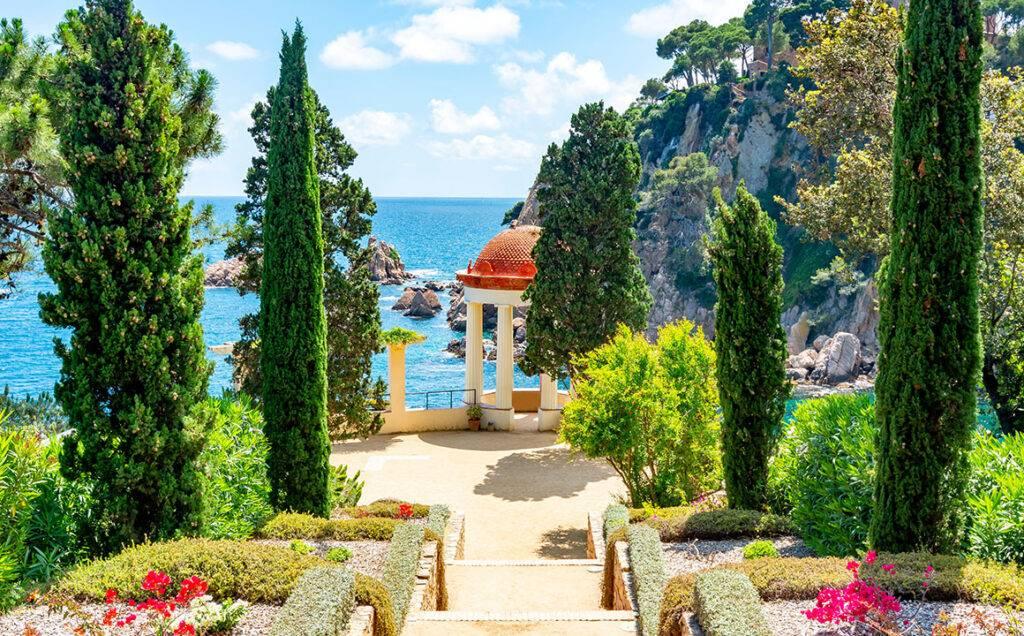
Transform your outdoor space into a blissful Mediterranean oasis by incorporating elements that echo the sun-soaked coasts of Southern Europe. Start with vibrant, fragrant flowers such as lavender, oleander, and bougainvillea to create a lively color palette. Terracotta pots filled with herbs like rosemary and thyme not only enhance the aesthetic but also add aromatic charm to your garden. Consider introducing rustic pathways made of natural stone or gravel, bordered by lush greenery, to mimic the winding roads of a Mediterranean hillside and encourage exploration throughout your space.
Creating shaded areas can be achieved with charming pergolas draped in climbing vines like grapes or jasmine, offering a perfect retreat from the sun. You can enhance your oasis further by including features such as a small water fountain or birdbath, inviting tranquility and the soothing sounds of water into your environment. An outdoor dining area adorned with wrought iron furniture, surrounded by fragrant shrubs and flowering vines, creates an inviting atmosphere for al fresco dining. Pair these elements together to cultivate a vibrant yet relaxing Mediterranean garden that transports you to sunny shores every time you step outside. For more inspiration, visit The Spruce.
Use trellises to support climbing plants and elevate your landscaping design
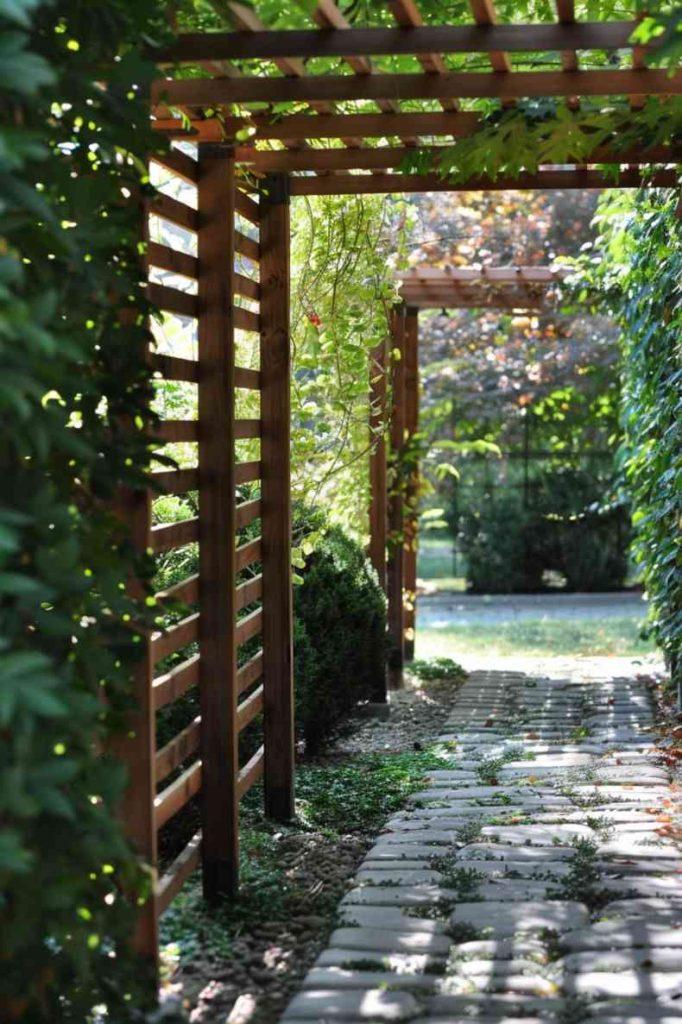
Incorporating trellises into your landscaping design not only provides essential support for climbing plants like vines and cucumbers but also adds a vertical dimension to your outdoor space. Wooden, metal, and vinyl trellises can transform a mundane wall or fence into a stunning focal point. You can train beautiful flowering vines, such as clematis or honeysuckle, to cascade over the structure, creating a vibrant display throughout the growing season. Overlaying multiple trellises can create layers of greenery, making your garden feel lush and inviting. Incorporate them strategically in corners, along pathways, or near patios to elevate the aesthetic appeal of your space.
To maximize the visual impact of your climbing plants, consider grouping different trellis types with varying designs and heights. This allows for a more dynamic look, especially when mixed with other garden features like garden arbors or pergolas. Additionally, using trellises can define spaces, creating intimate nooks within larger gardens. For a cohesive look, pick trellises that complement your home’s architecture. To start designing a custom trellis or find inspiration, explore dedicated gardening websites like gardeningknowhow.com.
Plan a childrens garden area for exploration and education within your landscaping design

Creating a special area in your garden dedicated to children not only encourages them to explore the wonders of nature, but also fosters a love for learning and play. Start by incorporating interactive elements such as a sensory garden with fragrant plants, colorful flowers, and textured foliage. Consider using raised garden beds, which are perfect for little hands to dig in the dirt and plant seeds. Add a nature trail with stepping stones or a rustic path that leads to a small themed area, such as a fairy garden or a bug hotel, attracting curious young minds to discover the magic of the outdoors.
To enhance the educational aspect, include a variety of stations throughout the garden where children can engage their minds. You might have a designated spot for nature journaling, equipped with clipboards and pencils, where they can sketch what they see. A small compost area can teach them about recycling and the importance of reducing waste, while a weather station featuring a simple rain gauge and wind vane can introduce them to basic meteorology. Consider planting native species that attract butterflies and bees, allowing for hands-on learning about ecosystems. By transforming the garden into a lively classroom, children will gain a deeper appreciation for nature and the environment. For more ideas on children’s gardening, check out kidsgardening.org.
Incorporate sustainable practices in your landscaping design to benefit the environment

- Native Plant Selection: Choose plants that are indigenous to your region. These plants are better adapted to the local climate and soil, requiring less water and maintenance. They provide essential habitats for local wildlife, including pollinators like bees and butterflies.
- Xeriscaping: Landscape using drought-resistant plants to minimize water usage. Incorporate mulch and rocks to reduce evaporation and retain moisture in the soil, making your garden more sustainable.
- Permeable Paving: Opt for permeable materials for walkways and driveways. This allows rainwater to seep through and reduce runoff, which helps replenish groundwater and supports local ecosystems.
- Rain Gardens: Create a rain garden to collect and filter stormwater runoff. Utilize native plants that thrive in varying moisture levels to naturally manage water and prevent erosion.
| Sustainable Practice | Benefit |
|---|---|
| Composting | Reduces waste while enriching soil |
| Solar Lighting | Energy-efficient and reduces carbon footprint |
| Mulching | Suppresses weeds and retains moisture |
- Vertical Gardens: Maximize space and improve air quality by incorporating vertical gardens made from recycled materials. These systems can create lush areas even in small spaces and promote biodiversity.
- Water Features: Add a pond or water feature that can recycle water and attract wildlife. Utilizing a natural filtration system will maintain the water quality and encourage aquatic plants to grow.
- Edible Landscaping: Combine beauty and function by growing fruits and vegetables in your landscape design. This practice not only enhances aesthetics but also promotes food security and reduces carbon emissions associated with food transport.
- Green Roofs: If applicable, implement green roofs that provide insulation, reduce stormwater runoff, and improve air quality. They can also be a fantastic habitat for birds and insects.
For more information on sustainable landscaping practices, visit nature.org.
Insights and Conclusions
As we conclude our journey through these 24 inspiring landscaping design ideas, we hope you feel equipped with the creativity and motivation to transform your outdoor space into a breathtaking oasis. Whether you find joy in vibrant garden beds, tranquil water features, or innovative hardscaping, each idea offers a unique perspective on enhancing your surroundings. Remember, the beauty of landscaping lies not just in the design, but in the personal touch you bring to it. So gather your tools, unleash your imagination, and embark on the adventure of creating a landscape that reflects your style and spirit. Your dream outdoor space awaits—let the transformation begin!
